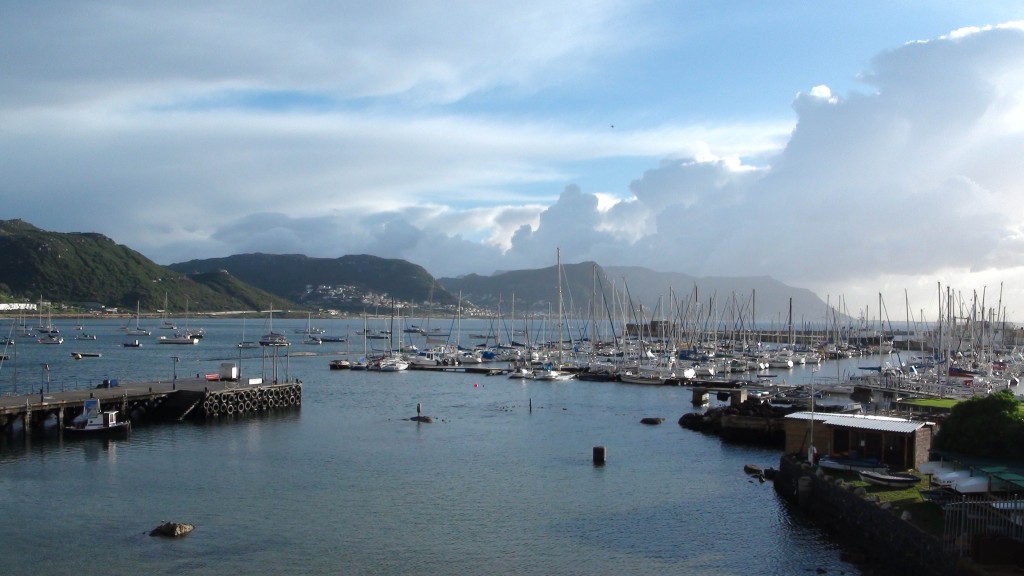Well I made it through a relatively painless 2 day set of flights from NYC-Dubai-Cape Town and arrived all in one piece! The flights were long but comfortable, it was the overnight layover in Dubai which left something to be desired… I realize now that I should’ve taken a photo of myself curled up in a half-reclined airport seat with my feet on my pelican case propped up in a duty-free push-cart. There’s no way to accurately describe the discomfort!
I arrived in Cape Town in the late afternoon but, as it’s winter here, it was already dark. It was also pouring rain. And they drive on the left in South Africa. Oh, and the only rental cars available have manual transmission, which is also on the left side. Needless to say it was an interesting night, driving up and over the mountains separating the city of Cape Town from the False Bay area and Noordhoek, where I’m staying! But nonetheless, probably due to some incredible stroke of luck, I arrived without crashing even once! I’m staying with Vicci Turpin and Sean Ryan, who are good family friends of the family I used to babysit for, believe it or not. Really makes you wonder if even six degrees of separation are necessary before you know everyone in the world!
Cape town is absolutely gorgeous. It might be literally the most beautiful place I’ve ever been. The mountains are incredibly dramatic and the ocean views entirely stunning. It’s a pleasure just driving around the mountains to have a look at the scenery. This is my first time in Africa and I’m absolutely hooked! Unfortunately (I use that word lightly..) I’m not here just to sightsee! For the next two weeks I’ll be working with Steve Benjamin before I head to Durban for the sardine run. Steve is the founder and owner of the one-man ecotourism operation Animal Ocean. What does Animal Ocean do, you ask? Well everything, of course! The website gives a much better explanation than I could (http://animalocean.co.za), but essentially Steve will take you out to do anything from sevengill cowshark diving to big wave surfing and surf skiing to diving in the bay with blue sharks, cape fur seals or dolphins! There’s so much to see and do just in the ocean around Cape Town that it could keep you busy for years!

I met up with Steve the day after I arrived and he immediately took me to see the penguins which have only just moved into Cape Town in the last few years. We had a great chat about the importance of ecotourism for the local environment (raising awareness about the various ocean critters, assisting with their continuing protection, etc.) on our way to Miller’s Point, where we hopped in the water for some freediving with cowsharks. The cowsharks tend to hang out between two large kelp beds, and it was no trouble at all finding them, especially with such an experienced guide! Cowsharks can get as long as 3m, but they’re incredibly docile and they don’t seem to mind people getting close at all. The Save Our Seas foundation is currently working on a project to determine whether or not cowsharks can be easily photo ID’d using the same software that whale sharks are ID’d with, so Steve snapped photos of the sharks while I tested out my new underwater video setup. We managed to get photos of 21 individuals, and we definitely saw more than that! Afterwards we drove up to one of the Shark Spotters’ posts high up on one of the mountains overlooking the beach. Shark Spotters is a great organization which is making huge steps for shark conservation in Cape Town. Shark Spotters is essentially an alternative to shark netting, which kills tons of sharks every year. One spotter, high above the beach, can see if a Great White is anywhere near shore or near bathers and surfers. If a shark swims in, the spotter pushes a button on his or her radio transmitter which sounds an alarm on the beach and within about a minute everyone is out of the water! The more commonly used option, shark netting, is both lethal and most likely ineffective. Shark nets are large nets that are essentially scattered around the openings of bays – it would be entirely too expensive to close off an entire bay with nets. The purpose of shark nets is to catch sharks before they enter the bay, but once a shark is caught it will typically suffocate and die. As far as I understand, most sharks are found on the inside of these nets, which probably means that they were already in the bay and were caught and killed on their way out! The Shark Spotters are obviously a much more favorable method for protecting bathers and surfers from shark attacks, which in reality are incredibly rare already.
Today we attempted to go back out to Millers point for another freedive with the cowsharks, but unlike yesterday the entrance was extraordinarily rough! Laden with videocamera in one hand and fins in the other, scrambling over wet rocks, I got absolutely smashed by a swell and took a nasty spill! The videocamera was ripped out of my hand momentarily and while I scrambled to find it, images of smashed dome ports and flooded housings flashing through my head, my heart rate must have jumped tenfold! Luckily the water was deep enough that the housing sustained only a couple of small scratches and the lens was left unscathed! The swell had dropped the visibility enough that we drove over to Simonstown Harbor instead and went for a snorkel with the incredibly friendly catsharks. There were loads of them swimming around a couple of small shipwrecks in the harbor so we had a look until we were too cold and too hungry to go on!
Tomorrow we’re heading out for some surf skiing which should be a blast.